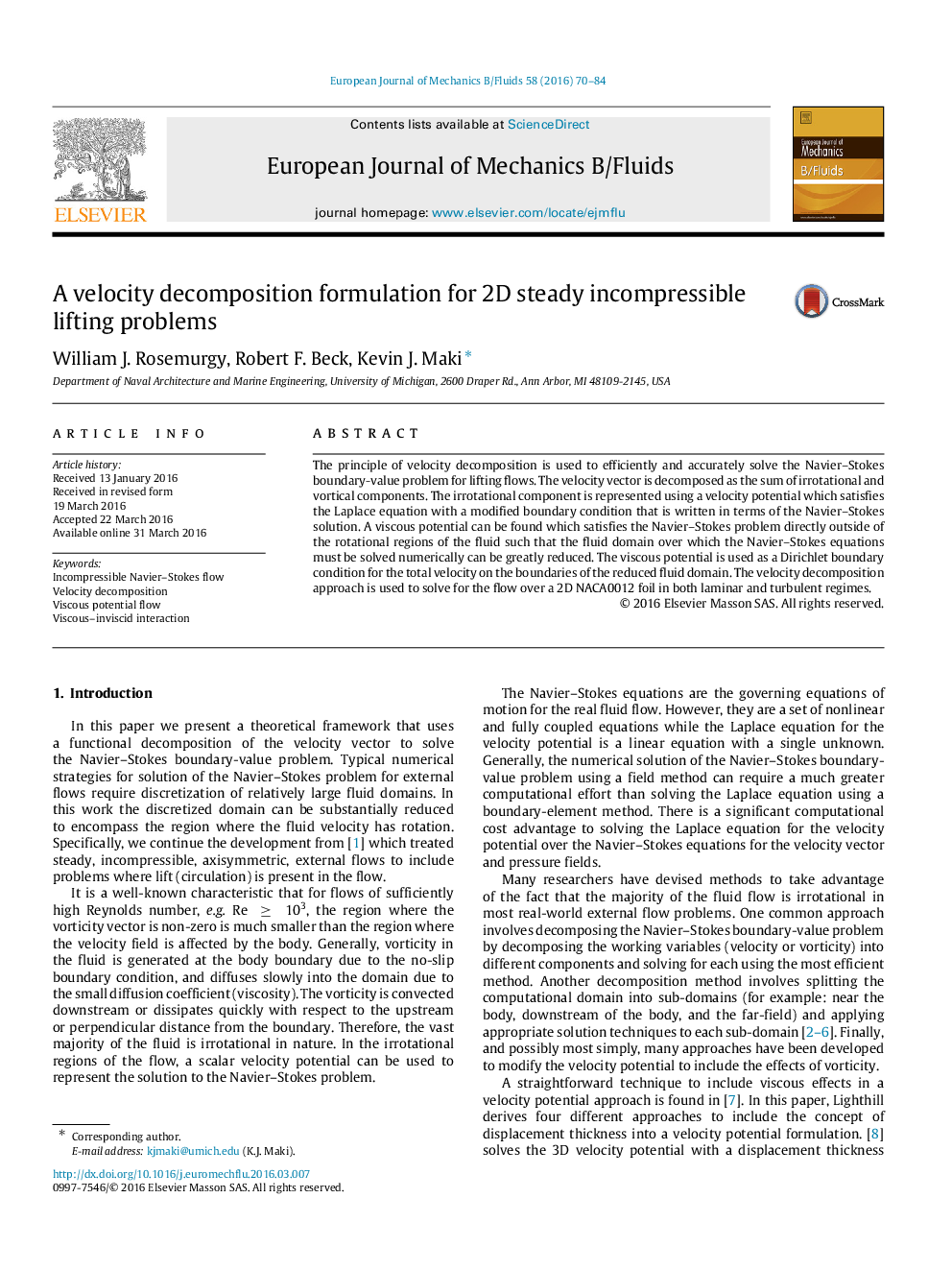| Article ID | Journal | Published Year | Pages | File Type |
|---|---|---|---|---|
| 7051195 | European Journal of Mechanics - B/Fluids | 2016 | 15 Pages |
Abstract
The principle of velocity decomposition is used to efficiently and accurately solve the Navier-Stokes boundary-value problem for lifting flows. The velocity vector is decomposed as the sum of irrotational and vortical components. The irrotational component is represented using a velocity potential which satisfies the Laplace equation with a modified boundary condition that is written in terms of the Navier-Stokes solution. A viscous potential can be found which satisfies the Navier-Stokes problem directly outside of the rotational regions of the fluid such that the fluid domain over which the Navier-Stokes equations must be solved numerically can be greatly reduced. The viscous potential is used as a Dirichlet boundary condition for the total velocity on the boundaries of the reduced fluid domain. The velocity decomposition approach is used to solve for the flow over a 2D NACA0012 foil in both laminar and turbulent regimes.
Related Topics
Physical Sciences and Engineering
Chemical Engineering
Fluid Flow and Transfer Processes
Authors
William J. Rosemurgy, Robert F. Beck, Kevin J. Maki,
